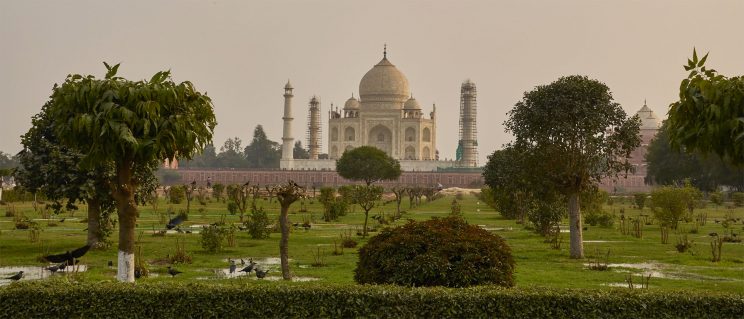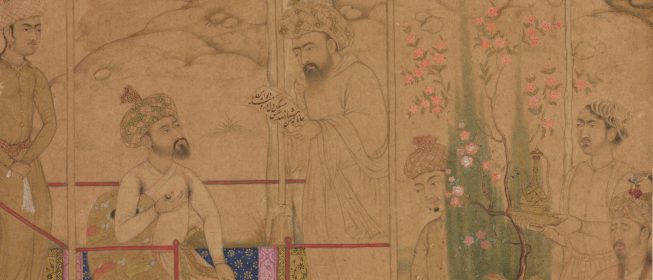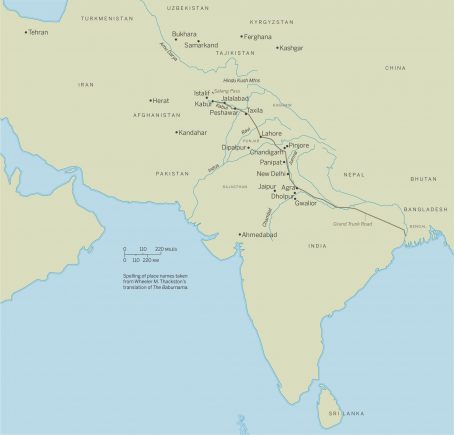“I have simply written the truth.” — Babur*
The founder of India’s Mughal dynasty (1526–1858), Zahiruddin Muhammad Babur, rose from origins as a Central Asian princeling to rule a vast empire stretching across today’s Afghanistan, Pakistan, and India. Over the course of his extraordinary life, he wrote a memoir known as the Baburnama, weaving incisive observations on art and nature into recollections of love, war, and political alliances. Babur’s grandson, the Mughal emperor Akbar (reigned 1556–1605), later commissioned the translation of his grandfather’s frank, uninhibited, and often funny diary. Today, the Baburnama offers a unique window into a remarkable mind and an exceptional time. The online exhibition Writing My Truth: The Mughal Emperor Babur brings together Persian paintings from Babur’s lifetime (1483–1530) with Mughal paintings from 1580 to 1650, when his autobiography was illustrated and circulated.
This website also celebrates the gift of papers and plans of Babur’s gardens from garden historian Elizabeth Moynihan to the National Museum of Asian Art Archives. Elizabeth Moynihan became captivated by Babur’s story while living in India in the 1970s. In her extensive travels through Iran, Central Asia, India, and Pakistan, she sought out the remnants of Babur’s remarkable life—gardens, tombs, and landmarks. Along the way, she documented the gardens through sketches, photographs, site plans, and plant and rock samples. Now in the National Museum of Asian Art Archives, the Moynihan Papers are a window into the well-traveled and well-lived life of Babur. Through these extraordinary records, we invite you to follow in Babur’s footsteps as he carves lush and fragrant gardens into the landscapes of India, Afghanistan, and Pakistan.
*Thackston, Wheeler M., trans. The Baburnama: Memoirs of Babur, Prince and Emperor. New York: Oxford University Press in association with Smithsonian Institution, Freer Gallery of Art, Arthur M. Sackler Gallery, 1996. 241.








